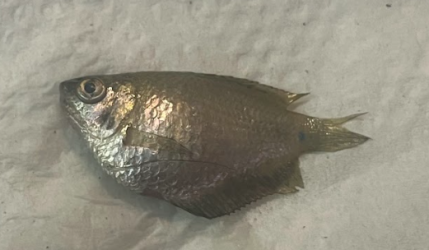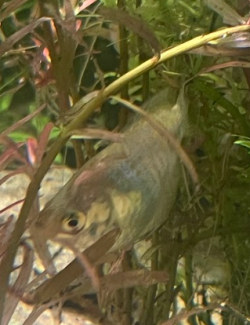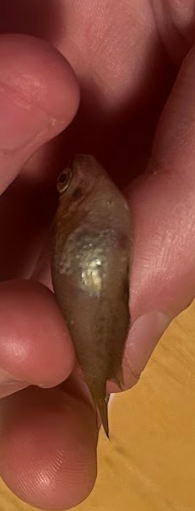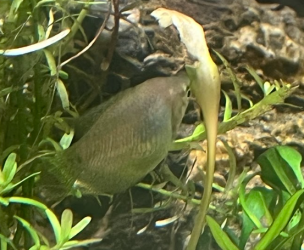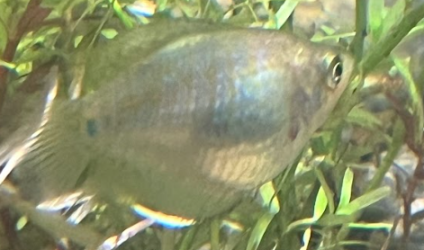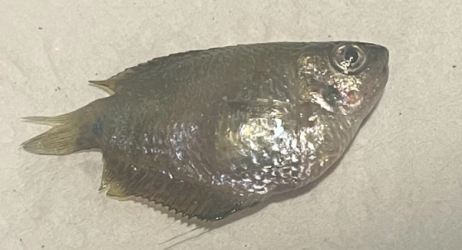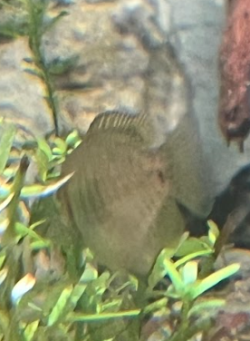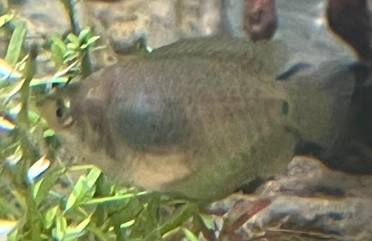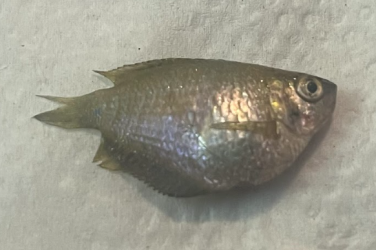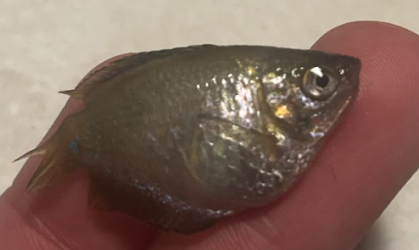James_R
New Member
About two weeks ago, I set up a new 75-gallon tank after my old one started leaking. While replacing the tank, I temporarily moved all my fish to a 30-gallon tote with a sponge filter. During this time, I noticed one of my platies had developed popeye in one eye, which was also cloudy. After setting up the new tank, I transferred the fish, but the day after the move, I noticed several were breathing heavily, and unfortunately, one died. Their gills appeared slightly enlarged, and some fish had fuzzy fungal growth at the ends of their tails.
I couldn’t tell if the issue was gill disease or flukes, so I treated the entire tank with a combination of Maracyn and ParaCleanse. I planned to wait two weeks before doing a second round of ParaCleanse to target any leftover fluke eggs. Now, a week after the first treatment, I came home to find one of my dwarf gouramis lying at a tilted 45-degree angle on the sandbed. It’s breathing rapidly and looks bloated, as if it has a large ball in its stomach. It occasionally swims up for air, but it struggles to do so.
The other dwarf gourami seems active and is breathing normally, but it has a few missing scales on the top of its head. I’m not sure if this is an injury or something like gourami disease. I haven’t added a new dwarf gourami in six months, but I did have one over a year ago that showed clear signs of gourami disease. I assumed the disease would have died out in the tank by now, but I’m starting to question that.
The platies are also having other issues. In addition to the one with popeye, I’ve noticed their poop is often white or clear and stringy, although it’s sometimes mixed with normal brown poop. One of my platies has a humpback, which it has had since it was a fry. I’ve had this fish for about three months, and I believe it’s genetic, but I’m wondering if it’s humane to keep it living like this.
Some of my female cherry barbs appear bloated as well. This has happened before, so I’m not sure if they’re carrying eggs or if it could be dropsy.
Despite all of this, most of the other fish seem to be behaving normally, with healthy appetites and regular poop. I’m struggling to figure out what’s causing these ongoing problems—whether it’s leftover pathogens from the tote, the new tank setup, or something else entirely. I’d really appreciate any advice or insights into what might be going on. Thanks in advance!
I couldn’t tell if the issue was gill disease or flukes, so I treated the entire tank with a combination of Maracyn and ParaCleanse. I planned to wait two weeks before doing a second round of ParaCleanse to target any leftover fluke eggs. Now, a week after the first treatment, I came home to find one of my dwarf gouramis lying at a tilted 45-degree angle on the sandbed. It’s breathing rapidly and looks bloated, as if it has a large ball in its stomach. It occasionally swims up for air, but it struggles to do so.
The other dwarf gourami seems active and is breathing normally, but it has a few missing scales on the top of its head. I’m not sure if this is an injury or something like gourami disease. I haven’t added a new dwarf gourami in six months, but I did have one over a year ago that showed clear signs of gourami disease. I assumed the disease would have died out in the tank by now, but I’m starting to question that.
The platies are also having other issues. In addition to the one with popeye, I’ve noticed their poop is often white or clear and stringy, although it’s sometimes mixed with normal brown poop. One of my platies has a humpback, which it has had since it was a fry. I’ve had this fish for about three months, and I believe it’s genetic, but I’m wondering if it’s humane to keep it living like this.
Some of my female cherry barbs appear bloated as well. This has happened before, so I’m not sure if they’re carrying eggs or if it could be dropsy.
Despite all of this, most of the other fish seem to be behaving normally, with healthy appetites and regular poop. I’m struggling to figure out what’s causing these ongoing problems—whether it’s leftover pathogens from the tote, the new tank setup, or something else entirely. I’d really appreciate any advice or insights into what might be going on. Thanks in advance!
Attachments
-
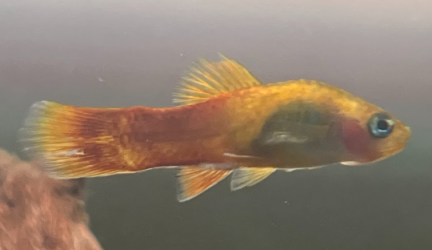 Screenshot 2024-11-19 171543.png362.1 KB · Views: 11
Screenshot 2024-11-19 171543.png362.1 KB · Views: 11 -
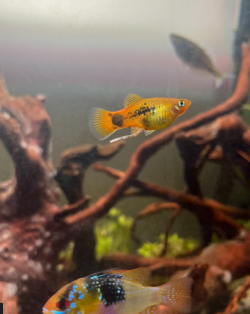 Screenshot 2024-11-19 171553.png559.1 KB · Views: 5
Screenshot 2024-11-19 171553.png559.1 KB · Views: 5 -
 Screenshot 2024-11-19 171558.png302.5 KB · Views: 8
Screenshot 2024-11-19 171558.png302.5 KB · Views: 8 -
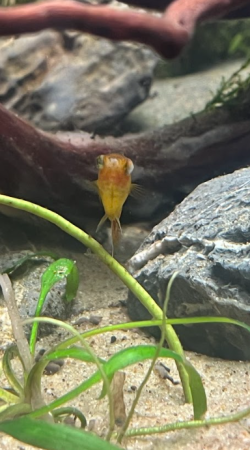 Screenshot 2024-11-19 171601.png472.4 KB · Views: 6
Screenshot 2024-11-19 171601.png472.4 KB · Views: 6 -
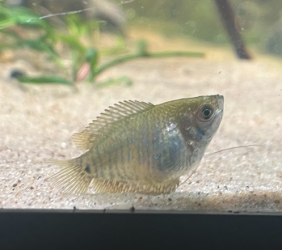 Screenshot 2024-11-19 171605.png302.7 KB · Views: 8
Screenshot 2024-11-19 171605.png302.7 KB · Views: 8 -
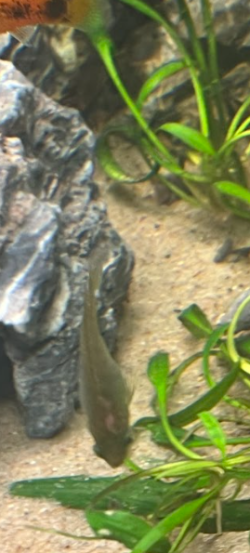 Screenshot 2024-11-19 171609.png313.4 KB · Views: 8
Screenshot 2024-11-19 171609.png313.4 KB · Views: 8 -
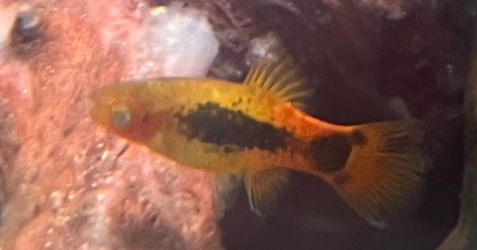 Screenshot 2024-11-19 171613.png372.1 KB · Views: 8
Screenshot 2024-11-19 171613.png372.1 KB · Views: 8 -
 Screenshot 2024-11-19 171620.png191.4 KB · Views: 6
Screenshot 2024-11-19 171620.png191.4 KB · Views: 6 -
 Screenshot 2024-11-19 171617.png107.7 KB · Views: 4
Screenshot 2024-11-19 171617.png107.7 KB · Views: 4 -
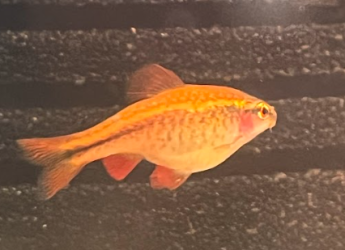 Screenshot 2024-11-19 171624.png205.1 KB · Views: 5
Screenshot 2024-11-19 171624.png205.1 KB · Views: 5

